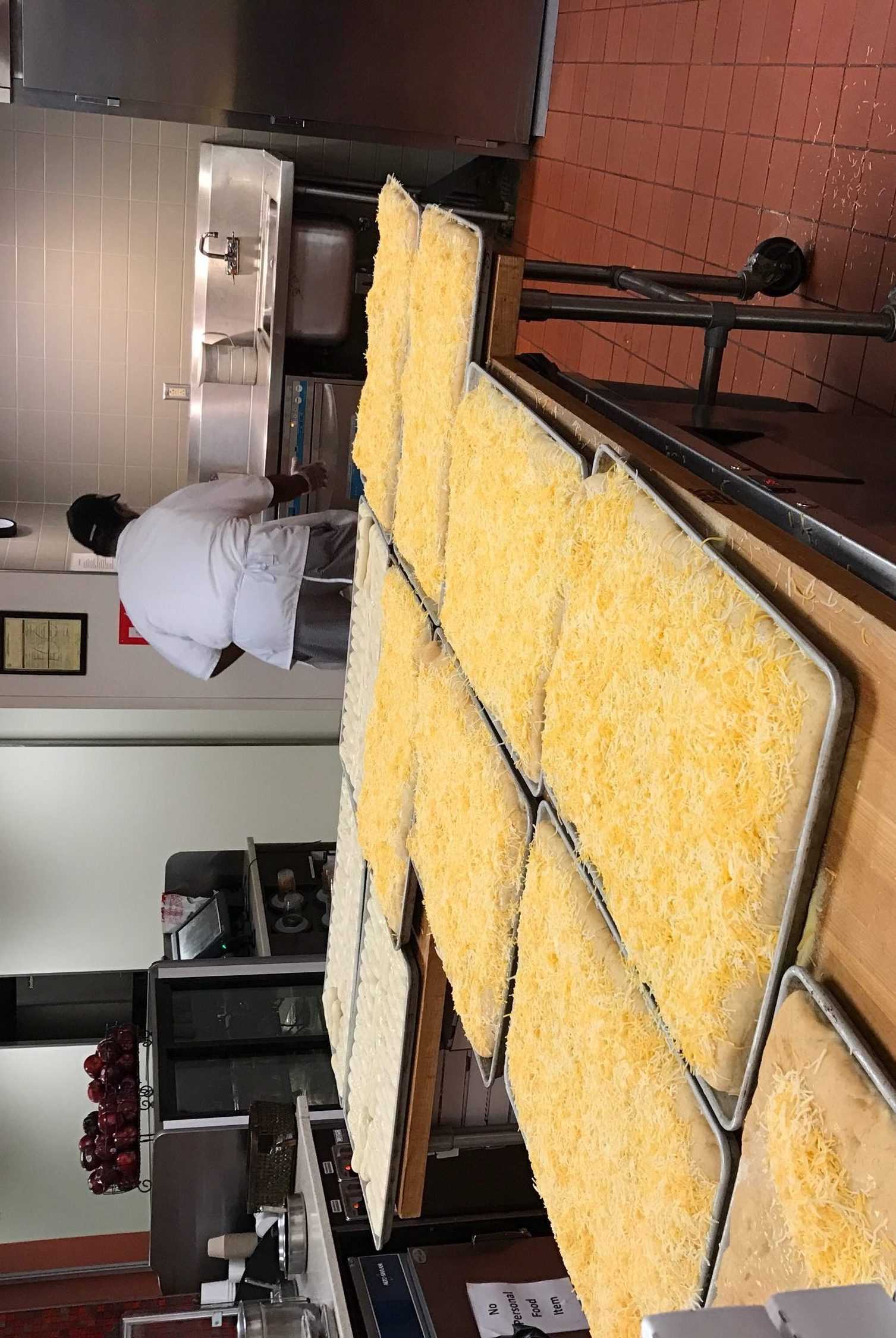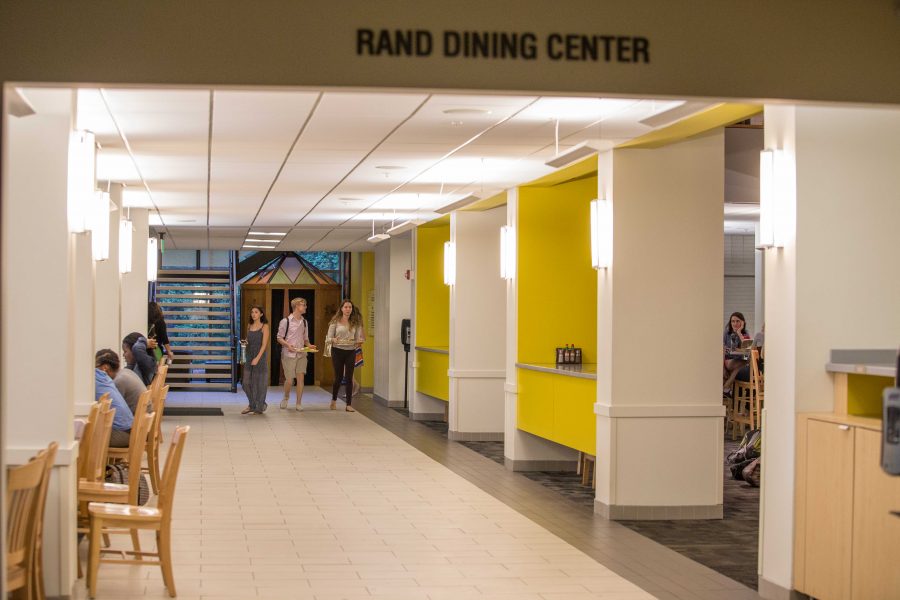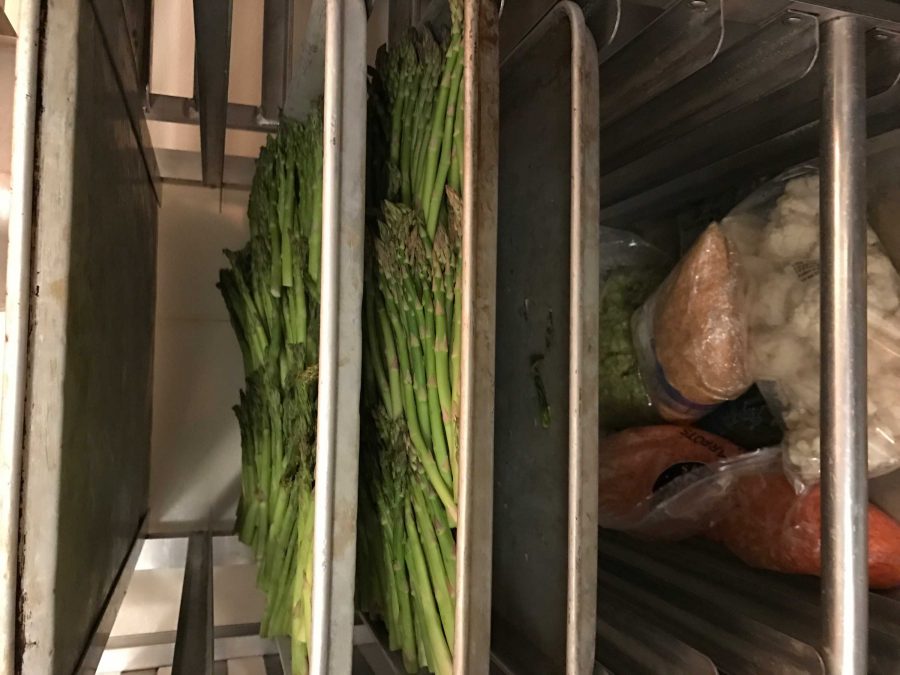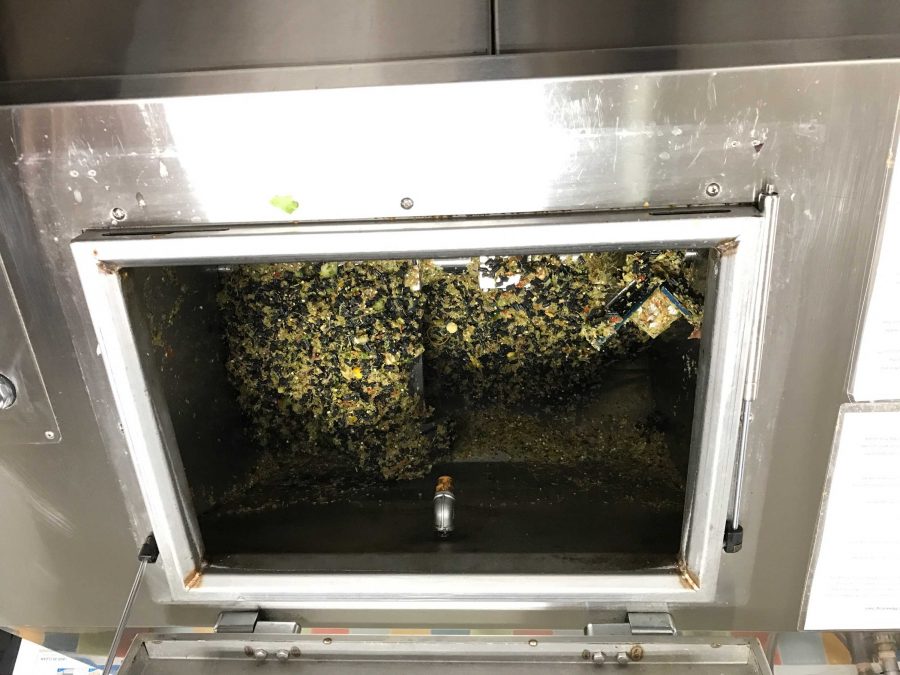The lunch rush at Rand serves around 2500 people every day. As hungry students and faculty wander the central dining area trying to decide what to eat that day, Rand’s kitchen employees are spending every minute trying to provide consumers with quality food. Sitting down to eat a bowl or a Randwich, people might not realize that their food has been in the works since five in the morning or that every pound of food consumed is carefully calculated and ordered to avoid excess waste.
Behind the scenes of Rand’s kitchen lies a tight-knit community of employees working tirelessly to feed a growing student body. Walking through Rand’s kitchen at 9 a.m. on a Friday, employees jump from task to task and banter as they work.
“When this kitchen was built, the population here, I think, was under 1000 students, and now we have about 10,000, 11,000 students including grads. It’s challenging,” said Rand’s Executive Chef, Bill Claypool.
Construction of Rand was completed in 1952, and since then it has served as the main dining center on campus. Rand has become home to more advanced kitchen technology in order to keep pace with the growing demand for its food. The kitchen utilizes rapid cooling machines, steam ovens, massive produce baths and an ORCA food digester with enzymes that transform food waste into water. All of this new technology helps Rand chefs prepare food more quickly and in larger quantities in order to keep the kitchen operating smoothly throughout the day.
A typical day in the Rand kitchen starts as early as 5 a.m. A local bakery delivers fresh bread every morning, and employees begin their work preparing the day’s food. All of Rand’s food originates in the basement prep kitchen. Food delivery services like SYSCO drop of fresh meats and vegetables up to three times a week. Rand’s two-story kitchen houses multiple walk-in refrigerators, freezers and pantries with carefully stocked shelves of fresh vegetables, meat, and massive bags of spices. The food is taken out of storage and prepared as needed. Employees typically begin the morning preparing the produce for the day, including making salads and chopping vegetables for stations like Chef James’ Bowls and Pi and Leaf. From the prep kitchen, food will either hit the dining floor directly or travel through the main kitchen on the upper level.

This kitchen sits directly behind the serving area, churning out breakfast, lunch and dinner dishes as the day progresses. Chefs use various industrial-sized grills, ovens and sauteeing machines in order to prepare quality food in massive quantities. Chefs have planned each meal carefully in advance, and they will pull different ingredients from the shelves ahead of time to make sure that everything is in order for each day’s meal service.
The main Rand bake shop is located on the lower level, and most desserts are cooked in a massive oven that can hold up to two carts of baked goods at a time. The famous Rand cookies are cooked in the main dining area in order to keep them soft, fresh and ready-to-eat.
The Rand system is carefully orchestrated to keep pace with every meal. The lunch rush proves to be the most daunting task, according to Claypool.
“At around 10:30 it starts to get pretty hectic as we start trying to get lunch out,” Claypool said. “People have to kind of line up for pieces of equipment. We wish we could squeeze more in, but what defines what we can do is the hoods. The hoods chase up the building through the ceiling. With the codes you can only have so much food attached to it.”
Campus development teams have been working closely with people like Claypool to reorganize the dining process. Right now, Rand bears the brunt of campus food consumption. As the campus expands and new buildings are constructed, administrators are working to move some of this dining traffic away from Rand. Almost all new residence halls will have a dining area, similar to the Kissam Kitchen, in order to lessen the number of people eating in one place. Rand is the biggest dining operation on campus Rand kitchen’s managers and chefs have worked to adapt to Vanderbilt’s growing student body in order to provide quality food to students.



